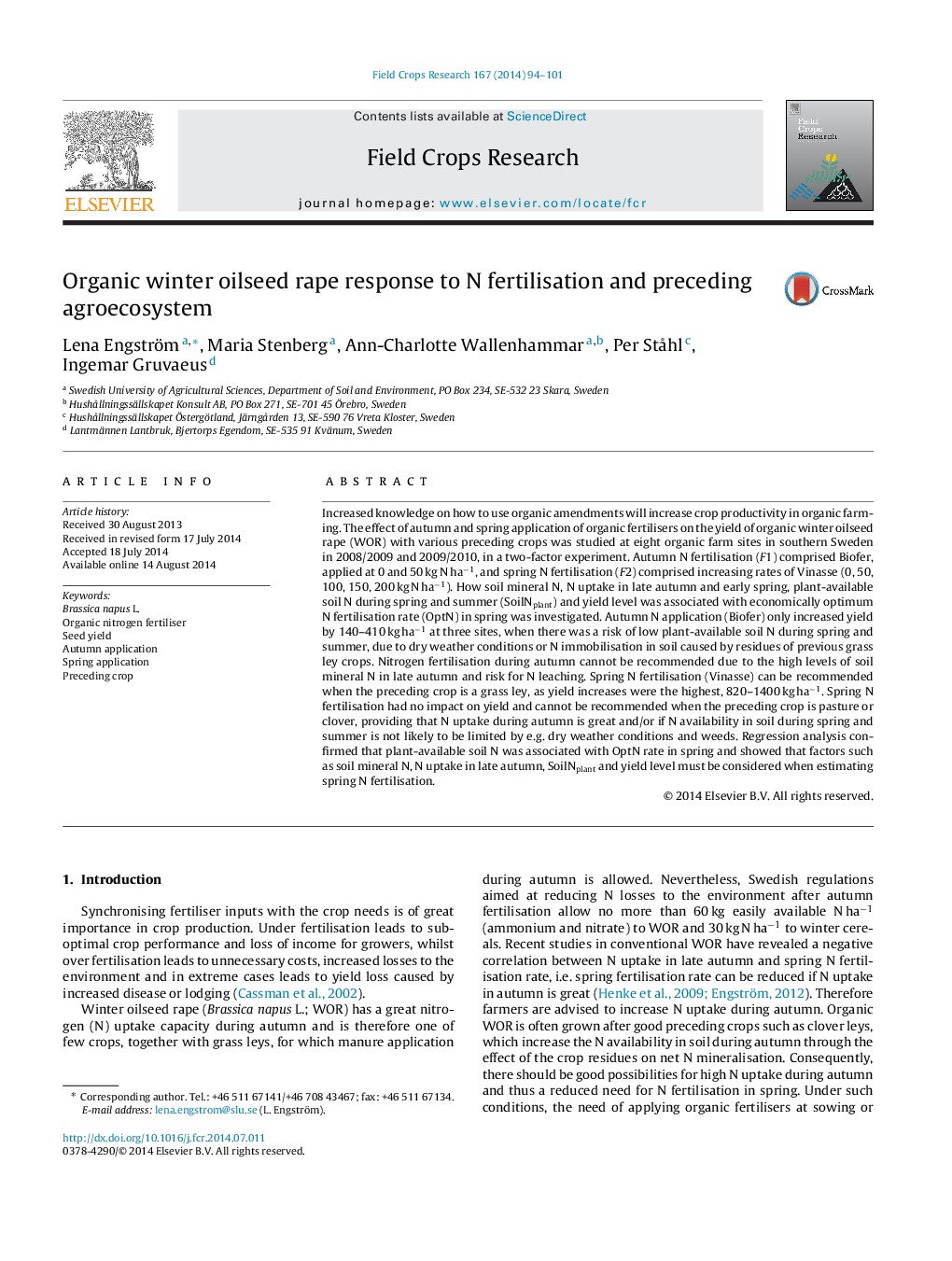| کد مقاله | کد نشریه | سال انتشار | مقاله انگلیسی | نسخه تمام متن |
|---|---|---|---|---|
| 4510068 | 1624696 | 2014 | 8 صفحه PDF | دانلود رایگان |
• Application of Biofer during autumn increased soil mineral N in late autumn.
• Autumn N application can be justified after previous crops such as grass leys.
• Highest yield increase for spring N application was with grass leys as preceding crop.
• Spring N fertilisation did not increase yield after white clover as preceding crop.
• Spring N requirement will be reduced with increasing N uptake during autumn.
Increased knowledge on how to use organic amendments will increase crop productivity in organic farming. The effect of autumn and spring application of organic fertilisers on the yield of organic winter oilseed rape (WOR) with various preceding crops was studied at eight organic farm sites in southern Sweden in 2008/2009 and 2009/2010, in a two-factor experiment. Autumn N fertilisation (F1) comprised Biofer, applied at 0 and 50 kg N ha−1, and spring N fertilisation (F2) comprised increasing rates of Vinasse (0, 50, 100, 150, 200 kg N ha−1). How soil mineral N, N uptake in late autumn and early spring, plant-available soil N during spring and summer (SoilNplant) and yield level was associated with economically optimum N fertilisation rate (OptN) in spring was investigated. Autumn N application (Biofer) only increased yield by 140–410 kg ha−1 at three sites, when there was a risk of low plant-available soil N during spring and summer, due to dry weather conditions or N immobilisation in soil caused by residues of previous grass ley crops. Nitrogen fertilisation during autumn cannot be recommended due to the high levels of soil mineral N in late autumn and risk for N leaching. Spring N fertilisation (Vinasse) can be recommended when the preceding crop is a grass ley, as yield increases were the highest, 820–1400 kg ha−1. Spring N fertilisation had no impact on yield and cannot be recommended when the preceding crop is pasture or clover, providing that N uptake during autumn is great and/or if N availability in soil during spring and summer is not likely to be limited by e.g. dry weather conditions and weeds. Regression analysis confirmed that plant-available soil N was associated with OptN rate in spring and showed that factors such as soil mineral N, N uptake in late autumn, SoilNplant and yield level must be considered when estimating spring N fertilisation.
Journal: Field Crops Research - Volume 167, October 2014, Pages 94–101
